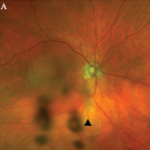When patient symptoms are missing from electronic records, it can also prompt clinicians to go in the wrong direction looking for a diagnosis and delay patients getting the care they actually need, Dr. Christina Weng of the Cullen Eye Institute and Baylor College of Medicine in Houston writes in an accompanying editorial.
“Data accuracy in patient medical records is absolutely critical,” Weng said by email.
“Documented signs and symptoms play an important role in efficiently steering providers towards the correct diagnosis and treatment, and medical records also serve as a means of communication between members of a patient’s healthcare team,” Weng added. “Any inaccuracies in the record could potentially threaten or delay patient care.”
SOURCES
Valikodath NG, Newman-Casey PA, Lee PP, et al. Agreement of ocular symptom reporting between patient-reported outcomes and medical records. JAMA Ophthalmol. 2017 Jan 26. doi:10.1001/jamaophthalmol.2016.5551.
Weng CY. Data accuracy in electronic medical record documentation. JAMA Ophthalmol. 2017 Jan 26. doi:10.1001/jamaophthalmol.2016.5562.
